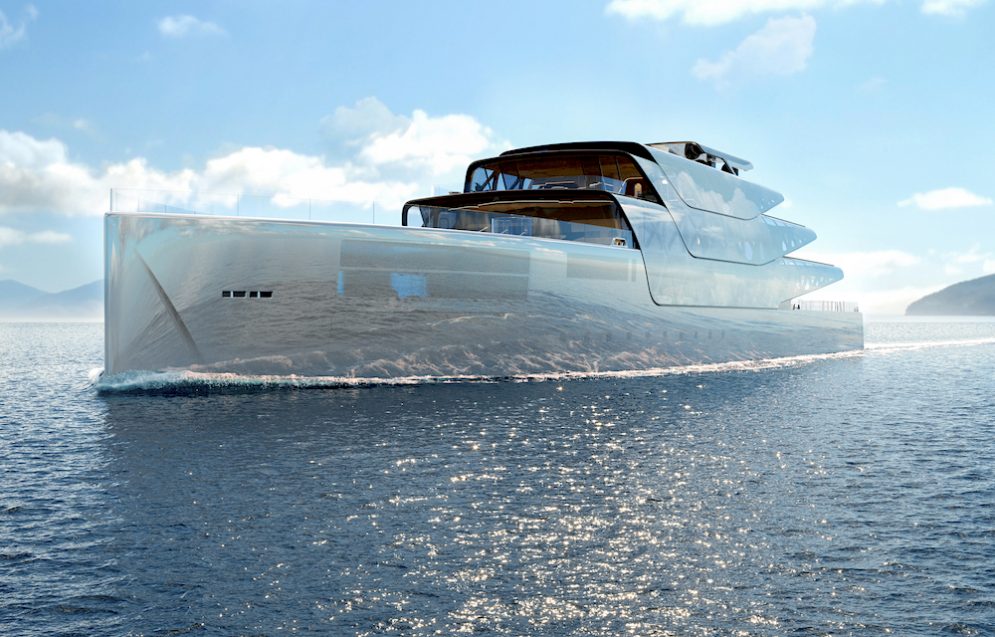There’s a lot going on with Pegasus, the concept superyacht envisioned by Jozeph Forakis as existing in total harmony with nature. Spanning nearly 300 feet long, the futuristic vessel is virtually invisible thanks to a silver-metallic finish that mirrors the sea’s motions and colors. Cladding the exterior hull and superstructure is a 3-D printed lightweight mesh framework that minimizes its environmental impact compared to traditional shipbuilding methods. Ditto for the solar panels embedded in the exterior’s reflecting glass, which is angled toward the sky in order to convert seawater into hydrogen and electricity, ensuring Pegasus can continue cruising without a hitch.
The overall effect is otherworldly—not a quality often associated with superyachts, which can often seem imposing and indulgent. “Sailing is a beautiful way to be close to nature, yet motor yachts have become synonymous with reckless exploitation of resources,” Forakis tells Forbes. “The challenge I give myself is to achieve a holistic ecosystem of ideas and expression, as balanced, essential, and poetic as ecosystems in nature. I’m interested in addressing humanistic needs in harmony with the environment.”
Pegasus would be fitted out with onboard amenities like an aquarium-style lap pool, an oversize jacuzzi, and large windows that transform into open balconies, but a meditative zen garden and reflecting pool inspire at least a hint of introspection. And inside, an Avatar-inspired hydroponic “tree of life” stretches across four interior levels.

